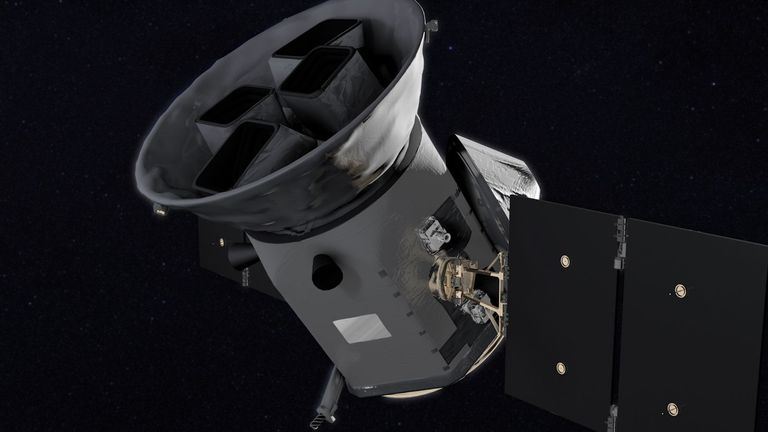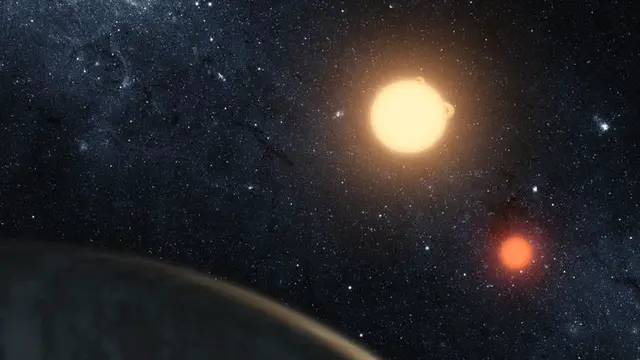An artificial intelligence algorithm has confirmed the existence of 50 new planets after it was used to analyse old NASA data.
The algorithm, created by astronomers and scientists at the University of Warwick, was used to look at previous telescope missions.
Data from
NASA's
Kepler and **Transiting Exoplanet Survey Satellite (TESS)
** , missions investigating planets outside the solar system, was analysed.

Image:Data from NASA's Kepler and Transiting Exoplanet Survey Satellite (TESS) was analysed. Pic: Nasa
This algorithm was trained to be able to separate signs of real planets and false positives, identifying those that had been missed by humans previously.
It also generated the probability of each potential planet being real.
The planets found range from being as small as Earth to as large as Neptune, their orbits also vary from a single day up to 200 days.
Typically, sky surveys identify thousands of potential planets, it is then up to astronomers to distinguish real planets from this information.
This new technique is not only quicker than other methods, but it can also be automated and improved with further training - researchers suggest it could be used as one of the tools used to validate planets in the future.
This is the first time artificial intelligence has been used to analyse samples of potential planets.
Dr David Armstrong, from the department of physics at the University of Warwick, said: "The algorithm we have developed lets us take fifty candidates across the threshold for planet validation, upgrading them to real planets.
He added: "A survey like TESS is predicted to have tens of thousands of planetary candidates and it is ideal to be able to analyse them all consistently.
"Fast, automated systems like this that can take us all the way to validated planets in fewer steps let us do that efficiently."
Now these planets have been identified, further observations and research into them can be carried out.
 简体中文
简体中文

